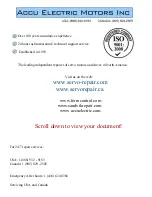
31
Installing the Inverter
Note
•
Apply a DC input to the P2 (+) and N (-) terminals to operate the inverter on DC current
input.
•
Use STP (Shielded Twisted Pair) cables to connect a remotely located motor with the
inverter. Do not use 3 core cables.
•
Make sure that the total cable length does not exceed 492 ft (150 m). For inverters < = 3.7
kW capacity, ensure that the total cable length does not exceed 165 ft (50 m).
•
Long cable runs can cause reduced motor torque in low frequency applications due to
voltage drop. Long cable runs also increase a circuit‘s susceptibility to stray capacitance
and may trigger over-current protection devices or result in malfunction of equipment
connected to the inverter.
•
Voltage drop is calculated by using the following formula:
•
Voltage Drop (V) = [√3 X cable resistance (mΩ/m) X cable length (m) X current (A)] / 1000
•
Use cables with the largest possible cross-sectional area to ensure that voltage drop is
minimized over long cable runs. Lowering the carrier frequency and installing a micro surge
filter may also help to reduce voltage drop.
Distance
< 165 ft (50 m)
< 330 ft (100 m)
> 330 ft (100 m)
Allowed Carrier Frequency
<15 kHz
<5 kHz
<2.5 kHz
Do not connect power to the inverter until installation has been fully completed and the inverter is
ready to be operated. Doing so may result in electric shock.
•
Power supply cables must be connected to the R, S, and T terminals. Connecting power
cables to other terminals will damage the inverter.
•
Use insulated ring lugs when connecting cables to R/S/T and U/V/W terminals.
•
The inverter‘s power terminal connections can cause harmonics that may interfere with
other communication devices located near to the inverter. To reduce interference the
installation of noise filters or line filters may be required.
•
To avoid circuit interruption or damaging connected equipment, do not install phase-
advanced condensers, surge protection, or electronic noise filters on the output side of the
inverter.
•
To avoid circuit interruption or damaging connected equipment, do not install magnetic
contactors on the output side of the inverter.
Summary of Contents for H100
Page 14: ......
Page 18: ...Preparing the Installation 4 37 90 kW 3 Phase ...
Page 27: ...Preparing the Installation 13 ...
Page 47: ...33 Installing the Inverter ...
Page 48: ...Installing the Inverter 34 Input and Output Control Terminal Block Wiring Diagram ...
Page 61: ...47 Installing the Inverter ...
Page 71: ...Learning to Perform Basic Operations 57 ...
Page 88: ...Learning to Perform Basic Operations 74 ...
Page 103: ...89 Learning Basic Features Code Description V1 Quantizing ...
Page 129: ...115 Learning Basic Features ...
Page 140: ...Learning Basic Features 126 ...
Page 148: ...Learning Basic Features 134 ...
Page 171: ...157 Learning Advanced Features Deceleration dwell operation ...
Page 183: ...169 Learning Advanced Features ...
Page 184: ...Learning Advanced Features 170 PID Command Block ...
Page 185: ...171 Learning Advanced Features PID Feedback Block ...
Page 186: ...Learning Advanced Features 172 PID Output Block ...
Page 187: ...173 Learning Advanced Features PID Output Mode Block ...
Page 197: ...183 Learning Advanced Features ...
Page 201: ...187 Learning Advanced Features Code Description 100 EPID1 Control block ...
Page 202: ...Learning Advanced Features 188 EPID2 Control block ...
Page 237: ...223 Learning Advanced Features Time Period Schedule AP3 38 Except3 Day 01 01 ...
Page 244: ...Learning Advanced Features 230 ...
Page 259: ...245 Learning Advanced Features Code Description Code Description Volt ...
Page 362: ...Learning Protection Features 348 ...
Page 415: ...401 RS 485 Communication Features Item Standards Parity check None ...
Page 524: ...Table of Functions 510 ...
Page 533: ...Table of Functions 519 ...
Page 547: ...533 Troubleshooting ...
Page 585: ...Technical Specification 571 ...
Page 594: ...580 ...
Page 595: ...581 ...
Page 596: ...582 ...
















































